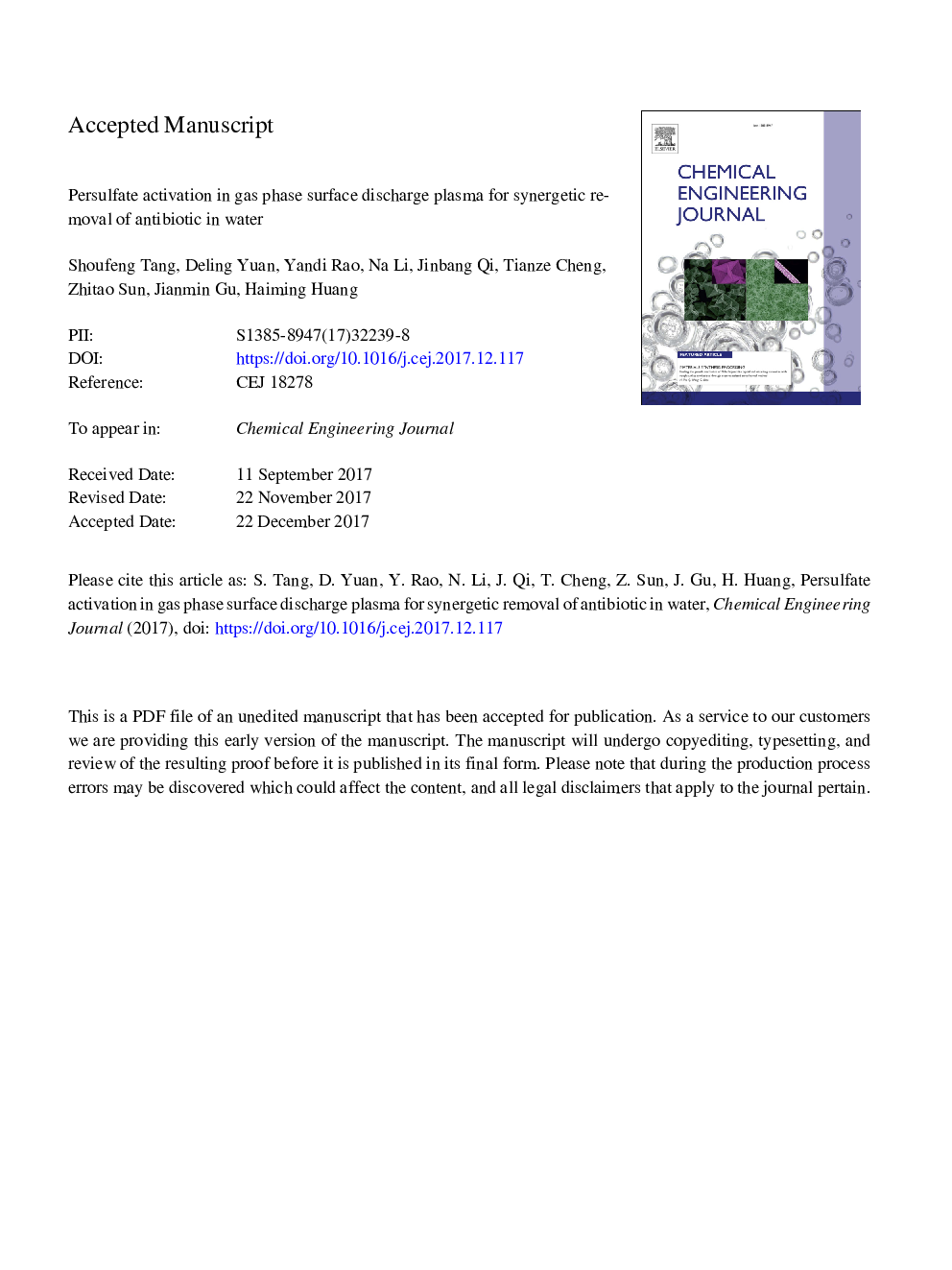| Article ID | Journal | Published Year | Pages | File Type |
|---|---|---|---|---|
| 6580448 | Chemical Engineering Journal | 2018 | 45 Pages |
Abstract
A process of persulfate (PS) activation in gas phase surface discharge plasma was studied to facilitate the removal of tetracycline (TC) in water. PS was introduced into the discharge reactor, and the effects of PS added dosage and applied voltage on TC removal were determined. The results showed that PS addition exhibited significant synergistic effect, promoting the degradation efficiency and removal rate of TC. Increasing the applied voltage was beneficial to the enhancement of TC decomposition. The removal efficiency and first order kinetic constant were achieved 87.5% and 0.232â¯minâ1 at a PS addition dosage of 20:1 (molar ratio of PS to TC) and a discharge voltage of 7â¯kV after 15â¯min treatment, respectively. Especially the calculated synergistic factor achieved 1.856, indicating the synergistic effect was existed. Besides, the removal of the synergistic system was influenced remarkably by the other operation parameters, including air flow rate, initial TC concentration, and initial pH value. The mineralization of TC and intermediates produced during the synergistic process was explored by UV-vis spectrogram and TOC analyses. The synergistic effect could be explained by the enhanced formation of hydroxyl and sulfate radicals that were generated from the activation of PS in discharge plasma. The evolution of the main degradation byproducts in the synergism process was investigated by HPLC-MS.
Related Topics
Physical Sciences and Engineering
Chemical Engineering
Chemical Engineering (General)
Authors
Shoufeng Tang, Deling Yuan, Yandi Rao, Na Li, Jinbang Qi, Tianze Cheng, Zhitao Sun, Jianmin Gu, Haiming Huang,
